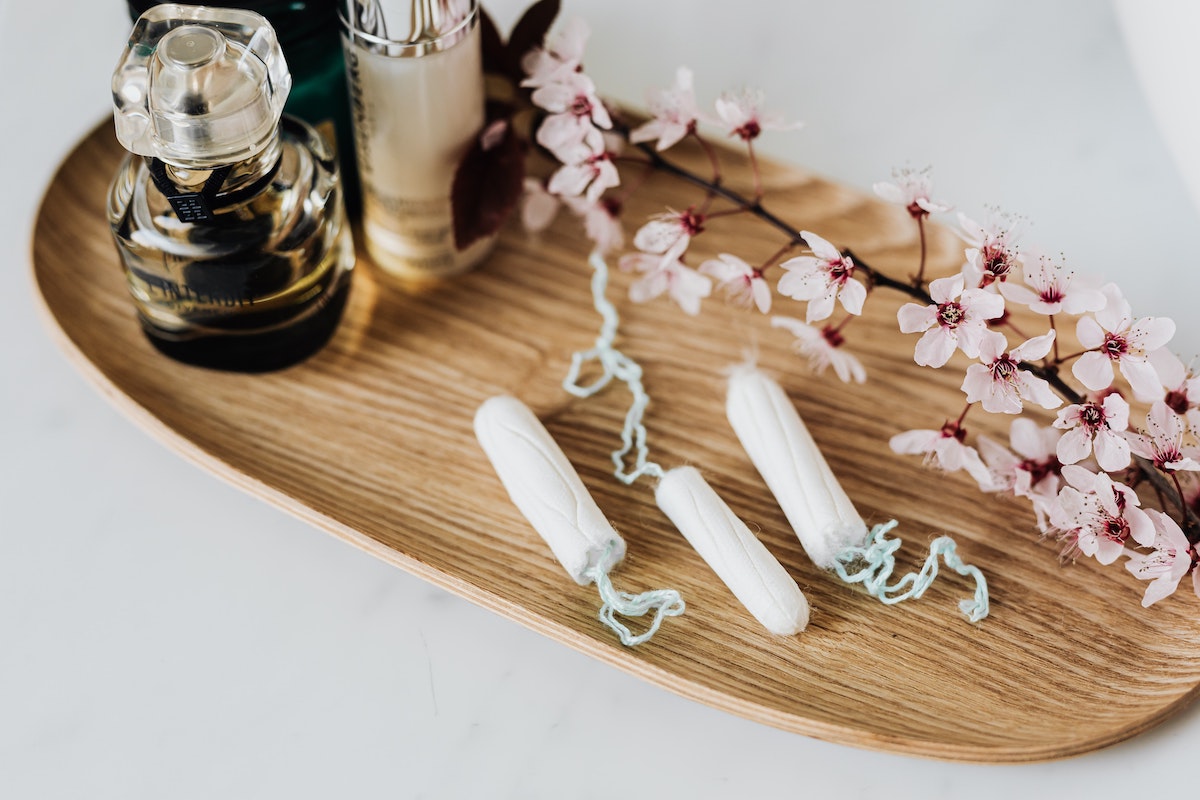I Tried Dance Therapy… and I Cried
Going in to dance therapy I figured I would either roll my eyes—hard—at the uncomfortableness of using movement as expression or it would tap into something inside me and I’d weep openly.
It was the latter.
Maybe not weep, but I definitely cried.
Erica Hornthal, founder of Chicago Dance Therapy, assured me that while not everyone cries in dance therapy, it is normal and it does happen. She then ran to get me some tissues.

Orange Pillow in an Empty Room
Leading up to my emotional breakdown (breakthrough?), Hornthal gave me a choice: begin our session in an intimate room sitting on a comfortable looking chair in a soothing off-white setting or sit on the hardwood floor in the middle of an empty yoga studio.
My first instinct was to choose the comfort and safety of a chair and four walls encircling me. But something about the open, vast space of the studio spoke to me—even if there was nothing in reaching distance for emotional support.
I picked out a large orange pillow to sit on and plopped it in the middle of the room.
We started with a body scan. I closed my eyes and rested my hands on my knees while focusing on my breathing. I noted how I felt from my head and neck to my arms and shoulders to my legs and feet.
While nothing really stood out to me aside from a slight tightness in my neck, Hornthal explained the scan can help people open up when they don’t know what to talk about. Maybe they feel anxious or their breathing is stuck or they realize they’ve started to relax when focusing on a particular body part.
Another exercise Hornthal uses to prepare clients to move and talk is an upper body stretching sequence—arms up overhead, across the body, and outstretched to the side.
Per Hornthal, this exercise can be an indicator of how we manage our emotions and present ourselves in vulnerable or new situations. Do we open our arms as far as they can go ready to receive or do we stop midway because we’re feeling vulnerable? Are we hunched over covering our faces in our arms trying to hide or just giving ourselves a good stretch or comforting hug?
Emotionally, I usually feel ready to hide, but my wide-open arm stretch suggested otherwise.
Mirrors and Spins
Hornthal again gave me a choice: begin by leading her in movement or be her “mirror.” I chose the latter because all I had to do was replicate what she was doing. But when it was my turn to be the leader, I felt awkward and self-conscious. Not knowing how to move, I reverted to my fitness background and bent down to the floor to stretch, did some long sliding lunges, and even threw in a child’s pose.
Then, for some reason, I broke out into a spin. And it made me really happy. So, I did a few more.
My emotions are usually kept in check, but the joy I felt obviously came through as Hornthal described my spins as playful. She also noted how my movements became bigger throughout the exercise. “As we’re moving together people maybe feel a little bit more comfortable,” she mused, “or they forget what it feels like to own their power.”
As she talked, I thought about how I usually fear my “power,” how fun it was to spin, and how I worry too much about feeling stupid in front of other people. She asked if I had any questions.
I didn’t. But I did have some feelings. And I couldn’t keep the tears from falling any longer.
Handing me a box of tissues as I cried, Hornthal related to my admission of holding my feelings in until situations like that one break the dam.
“If I use my body and allow myself to emote things more often it gives myself permission to be human. To feel those emotions,” she said of a realization she had during her dance therapy training days. “But as humans we’re really good at not feeling them or [we’re] busying ourselves with other things.”
Time and Space
Another epiphany came when I was instructed to mix up time and space—small movements versus large ones; quick movements versus slow ones. I did more long lunges, as well as some small steps across the room on my toes. I took small steps and made large arm movements and large steps with small arm movements.
I found that quick and big was my comfort zone, which made sense considering I lack patience. Whether it’s studying for something, practicing a new skill, or even listening to someone tell a story… I just want the CliffsNotes version and then to move on.
While I still have work to do when it comes to tedium, I didn’t expect dance therapy to bridge the way I move to my emotional wellbeing. The fact that I was so drawn to the roominess of the studio and that I wanted to cover it with big, fun movements made me think I might finally be ready to stop making myself so small in life. To own my space. Something I have always shied away from.
That, or I just really like to spin.












